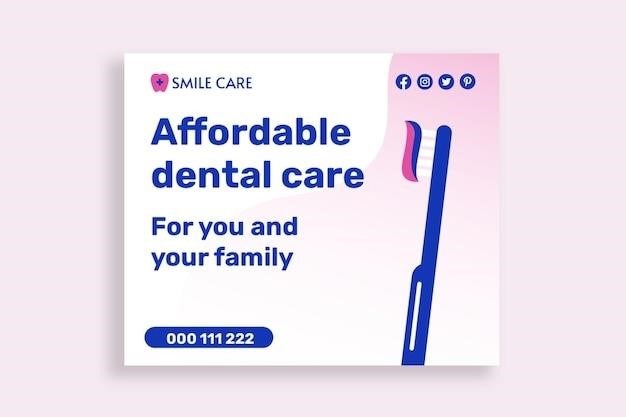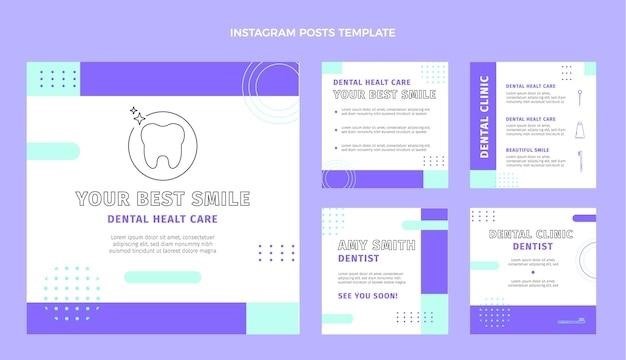Root Canal Post-Op Instructions⁚ What to Expect
Root canal treatment is a common procedure that can save a tooth from extraction. After the procedure, it’s essential to follow post-operative instructions carefully to ensure proper healing and prevent complications. These instructions may vary slightly depending on your individual case, so be sure to discuss them with your endodontist. This guide will provide general information about what to expect after a root canal, including pain management, swelling control, diet modifications, and oral hygiene.

Initial Recovery⁚ The First 24 Hours
The first 24 hours after your root canal are crucial for initial recovery. You’ll likely experience some numbness in the treated area due to the anesthetic used during the procedure. It’s important to wait until the numbness wears off completely before eating or drinking anything, as this helps prevent accidental biting or irritation. Avoid hot liquids and strenuous activities during this period to minimize swelling and discomfort. Additionally, smoking can interfere with the healing process and should be avoided.
You may also feel some tenderness in the area for a few days after your root canal as your body undergoes the natural healing process. This is a normal reaction and usually subsides within a few days. If you had discomfort prior to treatment, you can expect some discomfort after treatment. However, if you experience severe pain or unusual symptoms like swelling, fever, or drainage, contact your endodontist immediately. They may recommend additional pain relief or other treatments as needed.
Pain Management⁚ Addressing Discomfort
Pain management is an important part of post-root canal recovery. While some discomfort is normal, you can take steps to manage it effectively. Your endodontist will likely prescribe pain medication, such as ibuprofen or acetaminophen, to help alleviate discomfort. You can also apply a cold compress to the affected area for 20 minutes at a time, with 20 minutes off, for a few hours. This can help reduce swelling and pain.
It’s important to take your pain medication as directed by your endodontist. If you’re experiencing severe pain or pain that doesn’t respond to over-the-counter medications, contact your endodontist immediately. They may recommend stronger pain medication or other treatments to address the discomfort. In some cases, a mild infection may occur following a root canal, which can cause pain. Your endodontist can diagnose and treat any infection promptly.
Remember, pain management is crucial for a comfortable recovery. By taking steps to address discomfort effectively, you can promote healing and return to your normal activities more quickly.
Swelling Control⁚ Reducing Inflammation
Swelling is a common occurrence after a root canal, especially if the procedure involved significant inflammation. To manage swelling, it’s essential to apply a cold compress to the affected area for 20 minutes at a time, with 20 minutes off, for the first 24-48 hours. This helps constrict blood vessels and reduce inflammation. Avoid using heat as it can worsen swelling;
Elevate your head with an extra pillow while sleeping to help reduce swelling. Keep your head elevated for the first 24-48 hours to allow fluid to drain properly. Additionally, avoid strenuous activities like exercise or heavy lifting for the first 24 hours. These activities can increase blood flow and potentially worsen swelling.
If you experience excessive swelling, redness, or pain, contact your endodontist immediately. They may prescribe antibiotics or other medications to address the issue. Swelling should gradually subside over the next few days. If you’re concerned about the swelling, don’t hesitate to reach out to your endodontist for guidance.
Diet Modifications⁚ Eating After Root Canal
After a root canal, it’s important to avoid chewing on the treated tooth until the numbness subsides and your endodontist has given you the go-ahead. This is especially important for the first 24 hours after the procedure. Your endodontist may recommend a soft diet for the first few days to minimize pressure on the treated tooth. Think well-cooked pasta, mashed potatoes, cottage cheese, smoothies, and yogurt. Avoid hard, crunchy, or sticky foods that could put pressure on the tooth and potentially dislodge the temporary filling.
Once the numbness has worn off, you can gradually introduce more solid foods into your diet, but continue to avoid chewing on the treated side of your mouth until your permanent restoration is placed. If you’re waiting for a crown, avoid chewing on the treated tooth to prevent the temporary filling from dislodging. You can also opt for a soft diet until the crown is placed.
It’s also crucial to avoid very hot or cold foods and beverages for the first few days after the procedure as they can cause discomfort. Stick to lukewarm drinks and foods until your tooth has had a chance to heal. If you experience any discomfort, be sure to contact your endodontist for guidance.
Oral Hygiene⁚ Maintaining Cleanliness
Maintaining good oral hygiene after a root canal is crucial for promoting healing and preventing infection. You can brush and floss as usual, but be gentle around the treated area, especially for the first few days. Avoid using a hard-bristled toothbrush or flossing too vigorously. Focus on brushing and flossing the rest of your mouth thoroughly to prevent bacteria from spreading to the treated area.
Rinsing your mouth with warm salt water can also help to keep the area clean and reduce inflammation. To do this, dissolve a teaspoon of salt in a cup of warm water and swish it around in your mouth for 30 seconds, then spit it out and repeat as needed. Avoid using mouthwashes that contain alcohol, as they can irritate the treated area.
If you have any concerns about your oral hygiene routine after a root canal, don’t hesitate to ask your endodontist for specific instructions. They can provide personalized advice based on your individual needs and ensure you’re properly caring for your teeth and gums.
Follow-Up Appointments⁚ Ensuring Success
Following up with your endodontist after a root canal is crucial for monitoring your progress and ensuring the success of the treatment. Your endodontist will likely schedule a follow-up appointment within a few weeks after the procedure to check on your healing and make sure there are no complications. During this appointment, they will examine the treated tooth, check for any signs of infection or inflammation, and ensure the temporary filling is intact.
If you experience any unusual symptoms or discomfort after your root canal, it’s important to contact your endodontist immediately. Don’t wait for your scheduled follow-up appointment if you have concerns. Prompt attention to any issues can help prevent more serious problems and ensure a successful outcome.
Your endodontist may also recommend additional follow-up appointments depending on your individual case. For example, if you need a permanent crown, they will schedule an appointment to place it after the initial healing period. Regular follow-up appointments allow your endodontist to monitor your progress, address any concerns, and ensure your treated tooth remains healthy and functional.

Potential Complications⁚ Recognizing Signs
While root canal therapy is generally successful, it’s important to be aware of potential complications that can occur after the procedure. These complications are usually rare, but recognizing their signs early can help prevent more serious issues.
One common complication is a post-operative infection. This can occur if bacteria enter the tooth after treatment, leading to pain, swelling, and sensitivity. Other signs of infection include fever, redness, and pus discharge. If you experience any of these symptoms, contact your endodontist immediately. They may prescribe antibiotics to treat the infection.
Another potential complication is a failed root canal. This happens when the infection persists or returns despite treatment. Signs of a failed root canal include persistent pain, swelling, and sensitivity. If you suspect your root canal has failed, see your endodontist for a re-treatment or alternative solution.
Finally, there’s a possibility of a root fracture during the procedure. While uncommon, this can happen if the tooth is weakened or brittle. Symptoms of a root fracture include severe pain, sensitivity to pressure, and difficulty biting. If you experience these symptoms, consult with your endodontist for proper diagnosis and treatment.
Long-Term Care⁚ Protecting Your Tooth
After your root canal heals, it’s crucial to protect your treated tooth for the long term. This involves maintaining good oral hygiene, avoiding habits that can damage the tooth, and scheduling regular dental checkups.
Brushing and flossing regularly are essential for preventing plaque and bacteria buildup. These can lead to further infection and compromise the success of your root canal. Make sure to use a soft-bristled toothbrush and fluoride toothpaste to gently clean your teeth. Floss at least once a day to remove food particles and plaque from between your teeth.
It’s also important to avoid habits that can put stress on your treated tooth. These include biting on hard objects like ice, fingernails, and pencils. Chewing on the opposite side of your mouth whenever possible can reduce the load on the treated tooth.
Finally, scheduling regular dental checkups with your dentist is essential for maintaining the health of your treated tooth. During these appointments, your dentist can examine the tooth for any signs of decay or infection, and provide any necessary cleaning or repairs. This proactive approach can help prevent future problems and ensure the longevity of your tooth.
Lifestyle Adjustments⁚ Smoking and Exercise
While you may not think of smoking and exercise as directly impacting your root canal recovery, both can play a role in your overall healing process.
Smoking is a major risk factor for gum disease and tooth decay, both of which can affect the health of your treated tooth. Nicotine and other chemicals in cigarette smoke can impair blood flow to the gums, making it harder for the tissues to heal. Smoking can also weaken your immune system, making you more susceptible to infection. If you smoke, it’s best to quit or at least reduce your smoking to help your body heal properly after your root canal.
Exercise, on the other hand, can be beneficial for your overall health, including your oral health. Physical activity improves blood circulation, which helps deliver oxygen and nutrients to the gums and tissues, promoting healing. It also helps reduce stress, which can positively impact your immune system.
While you may need to adjust your exercise routine initially to allow your body to heal, it’s important to get back to regular exercise as soon as possible. Consult with your doctor to determine the best exercise plan for you based on your individual needs and health status.
Contacting Your Dentist⁚ When to Seek Help
While some discomfort after a root canal is normal, there are certain signs that may indicate a more serious issue. It’s important to be aware of these potential complications and seek professional help if they occur.
Contact your dentist immediately if you experience any of the following⁚
- Severe pain that doesn’t subside with over-the-counter pain relievers
- Increased swelling or redness around the treated tooth
- Fever or chills
- Pus or drainage coming from the tooth or gums
- Difficulty opening your mouth
- A change in your bite
- A loose tooth
Prompt attention to these symptoms can help prevent further complications and ensure a successful outcome for your root canal treatment. Don’t hesitate to contact your dentist if you have any concerns, even if you’re unsure if they’re serious. It’s always better to err on the side of caution and get professional advice.
